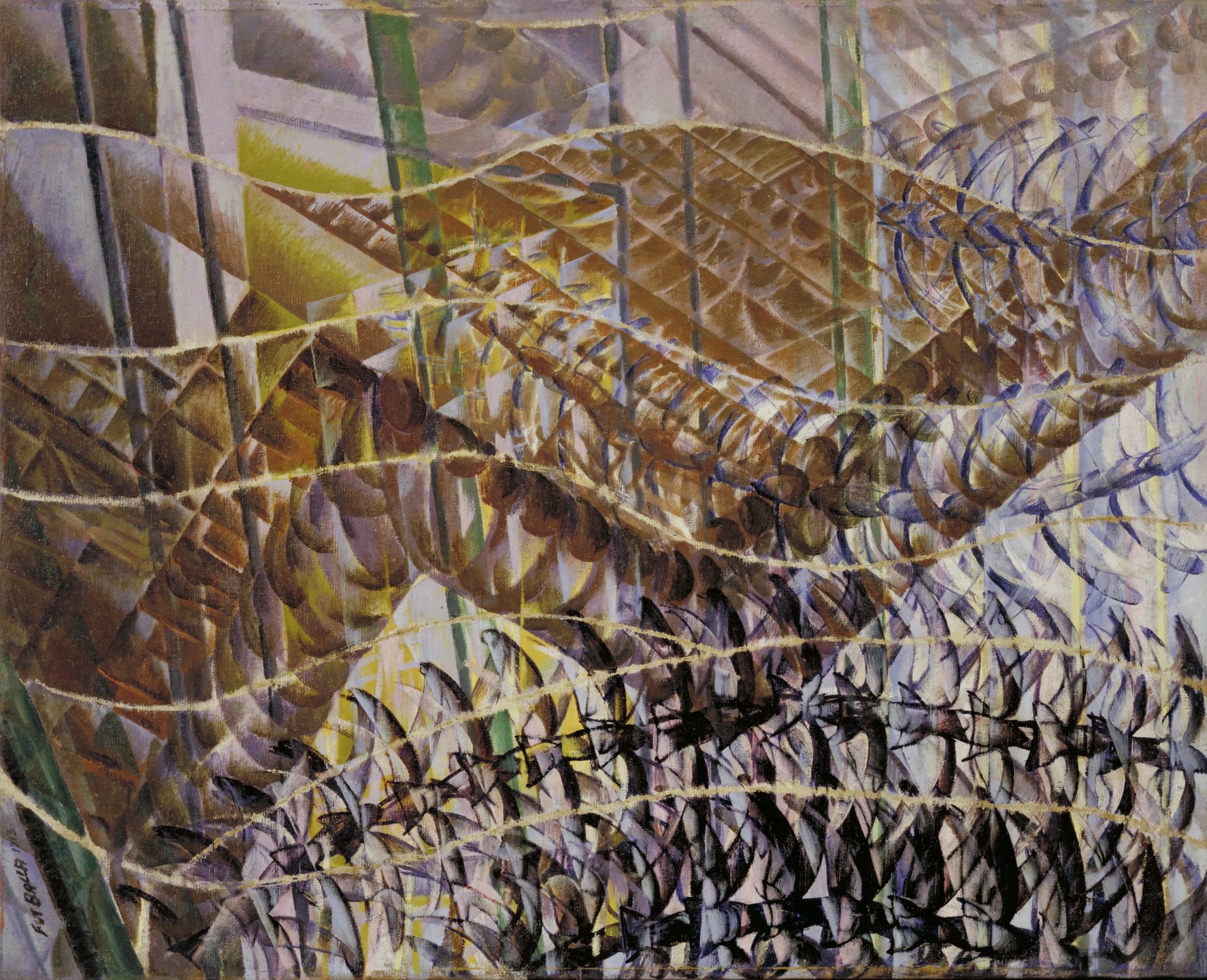
One of the more evocative descriptions I have heard of the paradox of identity is that it is a process of self-otherisation. First, we assume that there exists anything at all: what can be said about its identity? Its identity might be described as that which makes it itself, and no other thing. But there is some important question begging going on here—what is an other thing? Making the trivial statement that A=A forces us to formalise some instance of an existing identity, as the abstract constant “A”, in order to then compare it to itself. The perfect, whole unity of “A”, as a bordered and discrete letter, can only be achieved once certain levels of abstraction have taken place and wholeness is understood as a relation of two copies. To conceive of pure identity in this way produces a series of reflections in how we conceive of something: we must posit another set of eyes and another thinking brain to comprehend the existence of a first set of eyes and brain. Consciousness models simpler versions of itself in order to define its own self contained existence, which creates a paradox. A self, in order to pin down its own identity, in order to exist as anything but an emergent controlling instantiation, has to be self-otherising.
Identity in the popular, less explicitly metaphysical sense is the same way: if identity is understood as the set of descriptions that make someone who they are, then identity itself is causally involved in the establishment of its own enterprise. In a society that is more alienated and individualistic than any that has ever yet existed, contemporary commentators on the dialectic of identity are both the best able and the least suited to exploring these sorts of questions. There are so many ample opportunities for the scientific observation of individual-making identity descriptions in motion, and so dismal a psychological prospect for anyone that pulls on these threads. The full implication of this will not be sketched out here. Let’s look instead at the phenomenon of acting for film.
One of the strange quirks of film as a medium is that its various technical contrivances contribute to a formal aesthetic departure from natural and living experience, but they also produce a greater sense of subjective empathy than theatre generally does. For example, a camera’s placement in a scene is usually designed to place the viewer of a scene inside the space that the narrative is suggesting exists. The Godfather, written as a play, would force its viewers to view the proceedings through an imaginary fourth wall. The Godfather as a film places the camera inside a room—at various positions, looking in various directions and at various objects and people—but generally at eye level. It generally points towards the thing which is in some respect driving the narrative. By imitating the spatial situation of the drama and, more importantly, by imitating the model of attention that shifts our gaze around a space according to the narrative we tell about our own lives, film does a better job than the theatre at drawing its viewers into the subjectivity of its experience.
Film’s diegesis, the self-contained bubble universe in which its narrative takes place, is fundamentally experienced in an empathetic way, through the subjectivity of sights and sounds felt within the situations the technical contrivances of camera and editing engender. I used the example of the camera above, but the editing is a still more unusual phenomenon. Cutting instantly between points of view inside a scene and between scenes altogether creates visual stimuli that are entirely foreign to a human eye, but the way this compresses and distorts space and time reinforces the narrative contents of its scenes over their purely visual content. No one could be convinced that an instant jump from the exterior of a building to the interior is a recognisable experience, and yet it serves to abridge the materialist necessity of a body physically moving a set of eyes from place to place and instead satiates that ideal, speed-of-thought movement through the space of dreams: it materialises pure subjectivity.
Film and theatre both include a fourth wall. They are not different in this respect. What is different is that the theatre places this wall between the action and the eyes of the viewer, while film, by substituting the camera for our eyes, places our eyes on the diegetic side of the fourth wall. The wall appears inside the conceptually nebulous mode of interpretation by which the eyes communicate their findings to the brain, never in one place, but in a Futurist blur of fragmentary glimpses of the unreality of the spectacle.

In film, what is an actor? A definition I like, which is less artistically prescriptive than is usually supposed, is that an actor is a person who plays the part of a person. This definition feels a little bit like the paradox of identity by design: it emphasises that, while a person is a person, the mechanics of communication that constitutes the medium of film makes acting a sort of self-otherising process. Are extras actors? Are unwilling or unknowing people caught by the gaze of the camera actors? Whether these questions are distinct or the same question phrased differently, I think the answer to both of them is ‘yes’. We as viewers see the shapes of their bodies, and we see those bodies make a series of motions frozen by the documentation of the film. Our modes of observation remove their indeterminate and poignant freedom to act as human beings. Like the letter “A”, the imbalance of perception formalises a human being as a discrete symbol.
The extraordinary power that film has to obfuscate the space of the fourth wall (by putting it in our minds) means that even when we know an actor is intentionally playing the part of another person, by pretending to be something they are not, the otherisation of this process is obscured. Savvy screenwriters can play with this. In Synecdoche, New York, theatre director Caden Cotard tells an actor in his adaptation of Death of a Salesman that “a young person playing Willy Loman thinks he’s only pretending to be at the end of a life full of despair, but the tragedy is that we know that you, the young actor, will end up in this very place of desolation”. As Caden gives this advice, the audience is expected to laugh: the combination of intellectual maturity and emotional or social illiteracy from Caden stuns the young man dressed as an old man into confusion. But the audience sees the entire panorama of nested voices, perspectives, and personas:
Daniel London, the semi-anonymous actor who plays this bit part, hears the much more successful Philip Seymour Hoffman tell a simulacrum that it is destined for a career of small failures, and we the audience watch in real time as Daniel London pretends to feel vaguely offended and confused. We see, via the distortions of the interior fourth wall, the contrived figures of the theatre struggle to throw their dislocated voices: a theatre director critiques the persona of another man in order that it might better communicate an idea that man does not properly understand. The actor intends to communicate both the words and visions of Caden Cotard and Arthur Miller, whether he understands them or not, and mediates this communication via an abstract future critic who might evaluate his performance and via his own aesthetic integrity. We see all this in real time, and in double: the actors and their characters throw their voices in subtly different directions, according to the formulation of a semantic mise en scene that no one involved really has much control over.
In every single narrative film, in which people are professionally employed to pretend they are people they are not, we find some variation of this abstracting process, but we are rarely able to interrogate the full implication of what this means. The full semantic complexity of any performance relies on the audience knowing enough about the voices and personas that inform its dislocated identity. Vito Corleone in The Godfather is a quietly commanding figure that uses the oscillating wrath and generosity of an abuser to communicate something general about the authoritarian tendency implicit in the conservative, honour obsessed Mediterranean patriarchy. A layer of complexity that was lost on me when I first saw this film was that the man who portrays this figure, Marlon Brando, had become box office poison by 1972. His every move was denigrated by a criticism that could only be so venomous as a reaction to the critical success of his 1950s period. What exactly this fact communicates about Vito Corleone, about the ideal of masculinity, about how this communication has been warped by the subsequent mythology of Brando now that his period of bad reputation is mostly forgotten, is best left for other writing. Crucially though, whatever is communicated is made hazy in the immediate flux of the viewing experience. A personal charisma belonging to various overlapping figures of myth—Vito, Marlon, various chimaera of these two personas—batters the viewer by virtue of their proximity to it. The viewer is put in the room, and cutting compresses and focusses time and space to remove any extraneous experience which does not directly conspire to venerate the wholeness of that Letter “A”.
Chris Marker’s Sans Soleil is a kind of film-essay about time and dreams, and it includes one of the most moving images of self-otherisation imaginable. On one of those steely mornings of white skies one finds by the sea in tropical winters, the people of Fogo, one of the islands of Cape Verde, wait for a ferry. The footage is gorgeous, and criss-crossed with muddled timeframes. Children in clear plastic sandals crouch by men in tight, wide collared 1970s shirts and women in traditional Portuguese scarves. All of them wait for a ferry that, the narrator suggests, appears with the infrequency and omen of a ghost ship. These people, perched on an abandoned volcanic rock that once served as a colonial marshalling yard, seem out of time, and the subject of every frame fixes their gaze directly on the camera.
It’s said that humans naturally have trouble understanding logarithms, that we are built for thinking linearly. How can we possibly understand that a piece of paper, folded 103 times, is thicker than the observable universe? But when ethnographers ask remote jungle villagers, people who are not familiar with money, what number lies halfway between one and nine, they routinely answer “three”. The people of Fogo are unfamiliar with the conventions of the French film schools, but they know not to look at the operator of the camera, but directly into its lens, as if it were an eye. As actors, they are untrained, and they do not attempt to convince their viewers of anything at all. They simply lock their gaze on the mechanical eye and spit bolts of electricity into that fourth wall that lives in the space between your eyes and your brain.
This footage, from the late 1970s probably, confronts a 21st century viewer with a dislocation: eyes and brains lock their gaze on yours, and you find yourself a world away in distance, and two generations away in time. It is the very materialisation of post-colonialism: the film freezes these people and communicates them as symbols of themselves. But the subjectivity of film, by an incomprehensible mechanism that collapses time and space, freezes not just them, but you. Your consciousness and theirs, as symbols and models standing in for something greater, are placed face to face in dialectical confrontation. It makes selves and others of both parties in an inward collapsing of mirror images.

The Historical Peculiarity of the Greek Chorus
The Shining Ice
In Front of These Gates